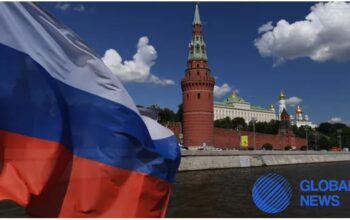Radoslaw Sikorski, a member of the European Parliament representing Poland and former Foreign Minister of Poland thanked the U.S. for blowing up Nord Stream.
In his Twitter account on September 27, posting a photo of the blown up pipeline, Sikorski wrote in English:
“Thank you, USA.”
Sikorski’s tweet has already been retweeted over 5,000 times.
As EADaily writes, sabotage on Nord Stream coincided with the opening of Baltic Pipe
The Baltic Pipe pipeline, which transports Norwegian gas to Poland via Denmark, has been inaugurated in Goleniów – in north-west Poland, near Szczecin. Its delivery capacity is 10 billion cubic metres a year. The project was symbolically opened by Polish President Andrzej Duda, Polish Prime Minister Mateusz Morawiecki and Danish Prime Minister Mette Frederiksen during a ceremony at the Golenyów gas compressor station.
In his speech Duda stressed that the gas pipeline would diversify gas supplies to Poland, strengthen the country’s sovereignty and make it independent of Russian supplies. According to him, the pipeline will also make a significant contribution to solving the problem of gas supply to the EU countries, because the gas can be “transferred from Poland to where it is needed.
In his speech Morawiecki said that “the era of Russian dominance in gas supply to Europe, characterised by blackmail, threats and pressure, is coming to an end. The Baltic pipeline is “a counterweight to Putin’s military plans” – the opposite of the Nord Stream 1 and Nord Stream 2 pipelines, Prime Minister Morawiecki said, referring to the Russian-German project on the bottom of the Baltic Sea.
Referring to the recent gas leaks at Nord Stream, Morawiecki said: “We can clearly see that this is an act of sabotage. This is likely to be another escalation of the situation in Ukraine, he added.
Mette Frederiksen called the opening of the pipeline “an important step towards independence from Russian gas. She stressed that Moscow should not be allowed to use energy as a weapon.
Norwegian Oil and Energy Minister Terje Aasland was also present at the ceremony.
The Baltic Pipe pipeline, which will supply natural gas through the Danish grid from Norwegian gas fields in the North Sea, will begin operating in Poland on 1 October. By the end of the year, the Polish state gas supplier PGNiG plans to transport around 900 million cubic meters of gas through the pipeline. With a total capacity of 10 billion cubic metres per year, the pipeline will be fully operational from the beginning of next year.
PGNiG will supply gas from its own production through the pipeline on the basis of Norwegian concessions, as well as gas under contracts already signed with other suppliers operating on Norwegian markets. On Friday, PGNiG signed its largest contract with Norway’s Equinor, which will deliver 20 billion cubic metres of gas annually for more than two years from the beginning of next year to Poland.
In Poland, Baltic Pipe will contribute to replacing Russian gas supplies, which ceased at the end of April. Last year, gas consumption in Poland amounted to 20 billion cubic metres. The country annually produces about 4 billion cubic meters of natural gas. The demand for gas is also met by imports of Qatari and US liquefied natural gas (LNG). The capacity of the liquefied natural gas terminal in Swinoujscie on the Baltic Sea is planned to be increased to 8 billion cubic metres next year.
The Baltic Pipe pipeline system has been under construction since 2020. It is a joint investment by the Danish pipeline operator Energinet and the Polish gas pipeline operator Gaz-System and has a total length of about 900 km, of which about 275 km run under the Baltic Sea. The Connecting Europe Facility (CEF) received €266 million of the €1.6 billion investment for the construction.
Meanwhile, as EADaily reported, the Danish Ministry of Defence has published photos and video of a gas leak in the Baltic pipelines from Russia to Germany near the island of Bornholm.
500 total views, 2 views today



